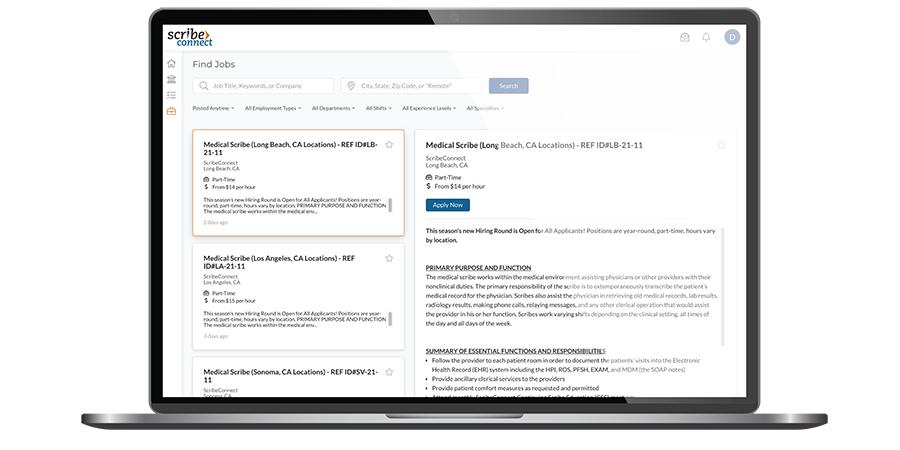The daily choices we make as medical providers are full of dilemma on ethics…Choices of right and wrong.
Idyllwild, CA – September 1, 2016 – by Kasaan Hammon
When we think of dramatic moments in medicine, what probably comes to mind are moments of great ethical dilemma – whether and how to jump in to help a patient in distress, whether to end life-sustaining therapy or not, how to deliver bad news to a patient or family member, whether to try the riskier procedure with the potentially better outcome… Whether or not we will ultimately have to face these types of decisions is unknown. But it is often fascinating to hypothetically explore our own possible reactions in these situations, if only to understand ourselves, others, and our profession better.
Since its adoption in 1847, the AMA Code of Medical Ethics has defined and set the bar for the values to which physicians must commit themselves as members of the medical profession. But whether you are a physician trained to handle situations which constantly demand the highest ethical standards and emotional demands, or a patient or family member facing these decisions totally unprepared, there is a certain degree to which we are all in the same boat – how we arrive at the decisions we make.
Ethics are the moral principles that govern a person’s or group’s behavior. Morality is defined as the extent to which an action is wrong or right, and it can be influenced by many cultural, social and individual factors. Numerous theoretical models explore how moral judgment plays into our decision-making. Philosopher Hume proposed that moral judgments cannot be derived from reason but only from emotion. However, according to Joshua Greene’s “dual process model,” there are two systems that influence our moral judgments: an explicit, rational system and an implicit, emotional system. Greene’s model proposes that making rational decisions takes longer when the dilemma is personal versus impersonal. Greene suggests this is because cognitive control has to override our immediate emotions. Other evidence suggests that decisions result from an integration of reason and emotion rather than the overriding of one or the other.(1)
When observed on a broad scale, most people do not consistently take one moral stance. Oftentimes, people are greatly influenced by contextual factors such as how personal the moral dilemma is, how difficult it is, and other emotions and circumstances. First and foremost, moral decision-making in dependent upon proper or improper perception of the facts. Factors which directly influence perception of the facts are the ability to comprehend details and weigh their relevance, physical circumstances such as pain or fatigue, or the distracting effect of various stimuli on what is perceived.
Decisions are also influenced by the anticipated outcome in terms of level of regret versus satisfaction.(2) According to one study, anticipated regret due to inaction may prompt behavior, often expressed later as “the path not taken” or “if only I had done something” response. (3) Once a decision is made, if regret is experienced due to the outcome, it will impact future decisions. People can often get consumed with examining the other options that were available.(4) Regret is magnified when individuals revisit the other available options and imagine the satisfaction the other option would have brought them. The way someone contemplates regret verses satisfaction is also affected by the “reversibility factor,” meaning whether the decision is considered reversible once made.(5)
Relationships can play an integral part in how we exercise moral decision-making. These relationships include those with our family, friends, clients or patients, our workplace, our profession, our religious or cultural traditions, our fellow citizens, and our nation. Our rights and moral obligations derive largely from our defined role in these relationships. We may have different obligations to family, as in a parent’s moral duty to care for their child, than those obligations we have as a member within a professional group. In addition to our role in the relationship, the history of that relationship can influence our decisions.(6)
Relationships can also be used to inform our ethical decision-making. It has been shown to be valuable to discuss moral questions with others. By doing so, we can get a better picture of the full range of considerations, draw on experiences other than our own, and improve the quality of our decision-making by learning from the reasoning processes others use. When discussing moral dilemmas with others, confidentiality and legal restrictions must be properly taken into account.
When next approaching an ethical dilemma, the decision-making process may be simply outlined in the following nine recommended steps (7): Recognize the moral dimension; identify the interested parties and their relationships; identify what values and principles are involved; sketch out options; weigh the benefits and burdens; looks for analogous cases; discuss with relevant others; determine how this decision accords with legal and organizational rules; and ultimately, ask yourself if you are comfortable with the decision, i.e. can you live with it?
(1) Nina Wang, “How We Make Moral Decisions,” Huffington Post, May 2015; (2) Cindy Dietrich, “Decision Making: Factors that Influence Decision Making, Heuristics Used, and Decision Outcomes,” Inquiries Journal, 2010; (3) Abraham and Sheeran, 2003; (4) Sagi & Friedland, 2007; (5) Gilbert & Ebert, 2002; (6) Chris MacDonald, “Moral Decision-Making,” EthicsWeb, June 2002; (7) Chris MacDonald, “A Guide to Moral Decision-Making,” EthicsWeb, September 2010.
 In-House Scribe SolutionsTake control of your medical scribe program
In-House Scribe SolutionsTake control of your medical scribe program Contracted Full-Service Scribe SolutionsWe Build a Turn-Key Scribe Program For Your Organization
Contracted Full-Service Scribe SolutionsWe Build a Turn-Key Scribe Program For Your Organization In-House Scribe SolutionsTake control of your medical scribe program
In-House Scribe SolutionsTake control of your medical scribe program In-house Scribe Program OverviewWith the ScribeConnect Scribe Management Platform you can have the best part of medical scribe’s EHR documentation help right in your organization.
In-house Scribe Program OverviewWith the ScribeConnect Scribe Management Platform you can have the best part of medical scribe’s EHR documentation help right in your organization. Overview and Key featuresMedical scribe management doesn’t have to be difficult, no matter what every other scribe providers tell you. The only SaaS medical scribe management platform is here for you.
Overview and Key featuresMedical scribe management doesn’t have to be difficult, no matter what every other scribe providers tell you. The only SaaS medical scribe management platform is here for you. for Healthcare OrganizationsFrom large hospital systems across urban centers, to small clinics operating in rural areas, our platform is designed to scale, grown, and accommodate your medical scribing needs.
for Healthcare OrganizationsFrom large hospital systems across urban centers, to small clinics operating in rural areas, our platform is designed to scale, grown, and accommodate your medical scribing needs. for Education InstitutesLooking for ways to offer your pre-med and pre-PA students more value? Or have a scribe training curriculum already in place and looking for a wider medical student audience? We can help.
for Education InstitutesLooking for ways to offer your pre-med and pre-PA students more value? Or have a scribe training curriculum already in place and looking for a wider medical student audience? We can help. for Scribe ApplicantsApply to medical scribe job openings across the country, and join a community of thousands of medical scribes. Access our comprehensive scribe training courses and more!
for Scribe ApplicantsApply to medical scribe job openings across the country, and join a community of thousands of medical scribes. Access our comprehensive scribe training courses and more! How to use our PlatformOur platform is simple to use, with robust features and powerful tools. Learn how to get the most out of our SaaS based platform with tips and tricks.
How to use our PlatformOur platform is simple to use, with robust features and powerful tools. Learn how to get the most out of our SaaS based platform with tips and tricks. Contracted Full-Service Scribe SolutionsWe Build a Turn-Key Scribe Program For Your Organization
Contracted Full-Service Scribe SolutionsWe Build a Turn-Key Scribe Program For Your Organization Full-Service Scribe Program OverviewWe hire, train, and manage your medical scribes so you don't have to.
Full-Service Scribe Program OverviewWe hire, train, and manage your medical scribes so you don't have to. Any provider, any time, anywhere.ScribeConnect has provided full-service, turn-key medical scribe programs for healthcare organizations large and small.
Any provider, any time, anywhere.ScribeConnect has provided full-service, turn-key medical scribe programs for healthcare organizations large and small.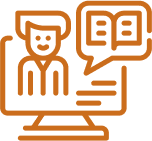 Frequently Asked QuestionsHere are some frequently asked questions that may help you decide whether or not a medical scribe program is right for you.
Frequently Asked QuestionsHere are some frequently asked questions that may help you decide whether or not a medical scribe program is right for you. Healthcare OrganizationsOur platform empowers your organization with intuitive tools to recruit, track applicants, train & certify scribes, and manage teams. Build and grow a strong and dynamic scribe program of any size with confidence.
Healthcare OrganizationsOur platform empowers your organization with intuitive tools to recruit, track applicants, train & certify scribes, and manage teams. Build and grow a strong and dynamic scribe program of any size with confidence. Healthcare OrganizationsOur platform empowers your organization with intuitive tools to recruit, track applicants, train & certify scribes, and manage teams. Build and grow a strong and dynamic scribe program of any size with confidence.
Healthcare OrganizationsOur platform empowers your organization with intuitive tools to recruit, track applicants, train & certify scribes, and manage teams. Build and grow a strong and dynamic scribe program of any size with confidence.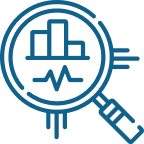 Solutions For Your Healthcare OrganizationEase your documentation load, keep your providers happy, and improve your revenue cycle with ScribeConnect Medical Scribe Solutions. Designed for Healthcare Networks, Clinics, Hospitals, Emergency Departments, and Practice Management Groups
Solutions For Your Healthcare OrganizationEase your documentation load, keep your providers happy, and improve your revenue cycle with ScribeConnect Medical Scribe Solutions. Designed for Healthcare Networks, Clinics, Hospitals, Emergency Departments, and Practice Management Groups Post A Job & Track ApplicantsWhether you're hiring one scribe, or an entire team or teams of scribes, we have America's largest dedicated medical scribe job board. Post, manage, and HIRE the most qualified scribes.
Post A Job & Track ApplicantsWhether you're hiring one scribe, or an entire team or teams of scribes, we have America's largest dedicated medical scribe job board. Post, manage, and HIRE the most qualified scribes. Course CatalogOur industry-leading, academically-based, professional Medical Scribe Training Courses (MSTCs) are designed for a range of topics, from general and continuing scribe training to in-depth specialty-specific courses.
Course CatalogOur industry-leading, academically-based, professional Medical Scribe Training Courses (MSTCs) are designed for a range of topics, from general and continuing scribe training to in-depth specialty-specific courses. Educational InstitutionsFrom enrollment to alumni services, ScribeConnect’s platform can be your powerhouse medical scribe training and certification program.
Educational InstitutionsFrom enrollment to alumni services, ScribeConnect’s platform can be your powerhouse medical scribe training and certification program. Educational InstitutionsFrom enrollment to alumni services, ScribeConnect’s platform can be your powerhouse medical scribe training and certification program.
Educational InstitutionsFrom enrollment to alumni services, ScribeConnect’s platform can be your powerhouse medical scribe training and certification program. Academic PartnershipsSee what a partnership with ScribeConnect can do for your department and institution.
Academic PartnershipsSee what a partnership with ScribeConnect can do for your department and institution. Learn About Our Collegiate CoursesLearn about our academically-rigorous certificate courses that have been developed for the college student and how they can complement & expand your program's offerings.
Learn About Our Collegiate CoursesLearn about our academically-rigorous certificate courses that have been developed for the college student and how they can complement & expand your program's offerings.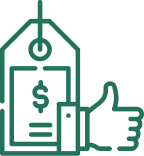 Financial Partnership ProgramSee how our financial partnership program can provide your institution with a new income stream in an extremely fast-growing, emerging, and competitive industry.
Financial Partnership ProgramSee how our financial partnership program can provide your institution with a new income stream in an extremely fast-growing, emerging, and competitive industry. ScribesAspiring scribes begin their education and path to employment here, while experienced scribes can learn valuable new skills and specialty-specific knowledge to take it to the next level.
ScribesAspiring scribes begin their education and path to employment here, while experienced scribes can learn valuable new skills and specialty-specific knowledge to take it to the next level. ScribesAspiring scribes begin their education and path to employment here, while experienced scribes can learn valuable new skills and specialty-specific knowledge to take it to the next level.
ScribesAspiring scribes begin their education and path to employment here, while experienced scribes can learn valuable new skills and specialty-specific knowledge to take it to the next level.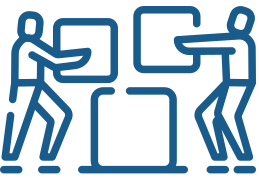 What We Can Do For YOU?ScribeConnect has built a rich legacy of helping pre-medical professionals launch their careers. Now we're providing more powerful tools than ever before to help you win. See how.
What We Can Do For YOU?ScribeConnect has built a rich legacy of helping pre-medical professionals launch their careers. Now we're providing more powerful tools than ever before to help you win. See how. Find JobsSearch our job board and apply to jobs in your area. Apply to work directly with ScribeConnect at one of our locations or apply directly to one of our partners.
Find JobsSearch our job board and apply to jobs in your area. Apply to work directly with ScribeConnect at one of our locations or apply directly to one of our partners.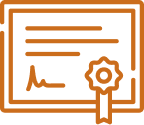 Course CatalogPosition yourself above the competition when you get certified through our rigorous Medical Scribe Training Courses (MSTCs). You'll be prepared and equipped to work as a scribe in the medical setting of your choice.
Course CatalogPosition yourself above the competition when you get certified through our rigorous Medical Scribe Training Courses (MSTCs). You'll be prepared and equipped to work as a scribe in the medical setting of your choice.



